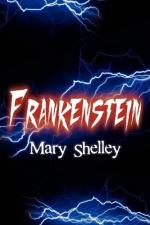|
This section contains 12,338 words (approx. 42 pages at 300 words per page) |

|
SOURCE: “The Deceptive Other: Mary Shelley's Critique of Orientalism in Frankenstein,” in Studies in Romanticism, Vol. 30, No. 2, Summer, 1991, pp. 255-83.
In the following essay, Lew explores Mary Shelley's Frankenstein as a critique of Romantic ideology as well as of the expansion of the British empire. He focuses on her use of Orientalist motifs and images of the dream maiden and the mother.
Frankenstein (1818) is highly conscious of the Orient and Orientalist discourse.1 Robert Walton and Henry Clerval both want to get to the Orient in a commercial and/or military capacity; Safie runs away from her father so that she need not return to an Oriental harem. Structurally, Shelley modeled her novel on earlier Orientalist fictions: on “Alastor,” Percy Shelley's only major publicly printed poem to date, as well as on Sidney Owenson's The Missionary. Frankenstein shares many preoccupations with Shelley's poem, especially the themes of the “epipsychidion...
|
This section contains 12,338 words (approx. 42 pages at 300 words per page) |

|


